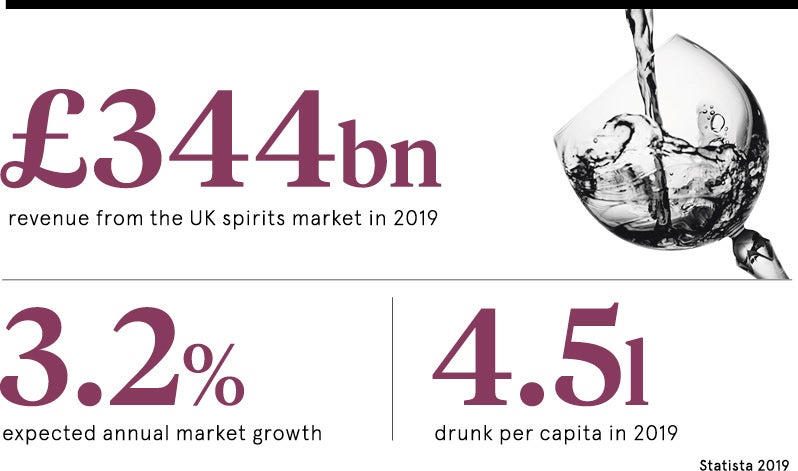When it comes to art and culture, the word “craft” is rich with meaning that has resonated throughout the centuries. Only recently has it been applied to drink. Once exclusively used by small, independent breweries and distilleries, has the meaning of “craft” now been diluted as the market matures, and bigger producers adopt the term?
Originally, craft meant beers created in America in response to falling quality standards, as Nick Ravenhall, managing director at Atom Brands, a craft spirits producer based in Kent, points out. “It was a movement of beer lovers who wanted to put passion and care back into beer production, and this really did stand for quality,” says Mr Ravenhall.
Since then the term has been seized on especially with craft spirits, providing a point of differentiation to help new, small, founder-led producers stand out.
Trends in the alcohol industry
Craft spirits applies not only to the alcohol being produced, but the narrative of those producing it. Take gin, rum and brandy brand Ableforth, established by Mr Ravenhall’s company.
Taking inspiration from the past, Atom Brands adopted methodology that would be difficult for existing mass-produced mainstream brands to mimic. Their Bathtub Gin harks back to the prohibition era in the United States, when gin was brewed at home by mixing grain alcohol with juniper berry juice topped off with water from the bathtap.
This homage to heritage isn’t just about adopting an evocative name, it’s about the brewing process too. Gin is distilled in a copper still and infused with six or more botanicals in a process that can take a week. This means the flavour, otherwise too delicate to survive, thrives.
“Spirits are part of our cultural fabric,” says Mr Ravenhall. “Use the words whisky, vodka or gin and you’ll rarely find someone who does not know what you’re referring to and because of this they’ve become somewhat generic terms that can be thrown about without too much thought.
“Adding the prefix ‘craft’ to a spirit automatically provides a brand with a point of difference and tells a story; a story of a flavoursome liquid meticulously created by passionate, and probably local, distillers and blenders.”
Capitalising on cocktail culture
With new distilleries opening every week and industry incumbents trying to keep up with smaller players, it’s integrity of taste that is paramount, according to Nick Wall, chief executive of Tails, which brings the craft spirits ethos to batched cocktails. Established in 2010, his company name alludes to the origin story of the tipple itself, alleging that in 1779 a tavern used rooster feathers to stir alcoholic mixed drinks which soon became known as “cock-tails”.
“While referring to a product as ‘craft’ can make it seem on trend, the most important factor will always be the quality of the drink,” says Mr Wall. “We recently did a consumer survey on the UK’s cocktail habits and found a huge 81 per cent value taste as the most important factor when ordering a cocktail. Branding will of course always play a big role in what consumers choose, but ultimately they will go back to the drink that tastes the best.”
Some committed producers are concerned that craft spirits is now such a trend in the alcohol industry that the true meaning is becoming diluted.

“It didn’t start out this way, but ‘craft’ has been used and applied by the bigger operators as a marketing technique,” argues Robert Hicks, founder of the Highland Liquor Company, whose gin is available in bars including at The Savoy and upmarket retailers such as Harvey Nichols.
“This is no different to the supermarkets creating their own farm brands to make a product appeal to consumers and feel handpicked. In many cases the product hasn’t changed, only the brand name and description.”
Simply slapping a craft spirits label on something isn’t enough, however. “The consumer wants to buy into an idea and a lifestyle and have the reassurance that time and care have been taken to create a special product,” says Mr Hicks. “They also expect honesty and can become cynical if the marketing doesn’t live up to the promise. So it is with the word ‘craft’. If it’s overused to the point that it loses its meaning, it ceases to become useful.”
Trends driven by health-conscious consumers
Partly, the demand for craft is also driven by consumers becoming more health conscious. When drinking less, they can afford to spend slightly more and quality is prized over quantity. Many crafts spirits companies are exploring new ingredients with fewer chemicals and concentrating on finding sugar substitutes such as agave.
This doesn’t mean the long-standing, traditional players are being driven out or middle-range products are ceasing to sell; what it does mean is they all compete.
“When it comes to some spirits categories, notably vodka, consumers are still more likely to purchase old favourites,” says Mr Ravenhall. “The spirits market is a very competitive place to be at the moment and the traditional, long-standing players are having to react to their customers’ quest for new, interesting products.”
The concept of craft is arguably one of the major drinks trends of recent memory. “The more spirits lovers find out about the variety of flavours available, the more they are open to trying new things,” Mr Ravenhall concludes. “Spirits drinkers are demanding more from brands than ever before, in terms of quality, flavour and brand story. And that’s really exciting.”
Trends in the alcohol industry
Capitalising on cocktail culture

